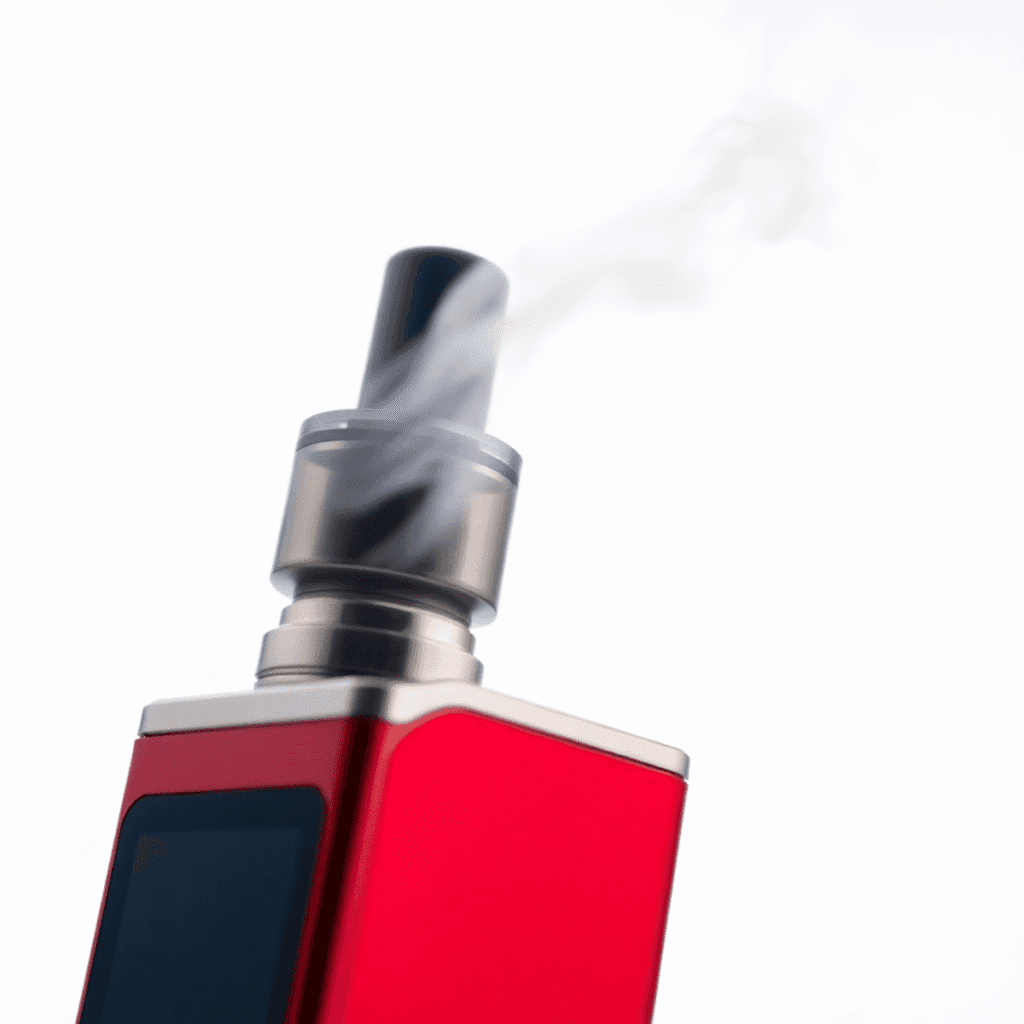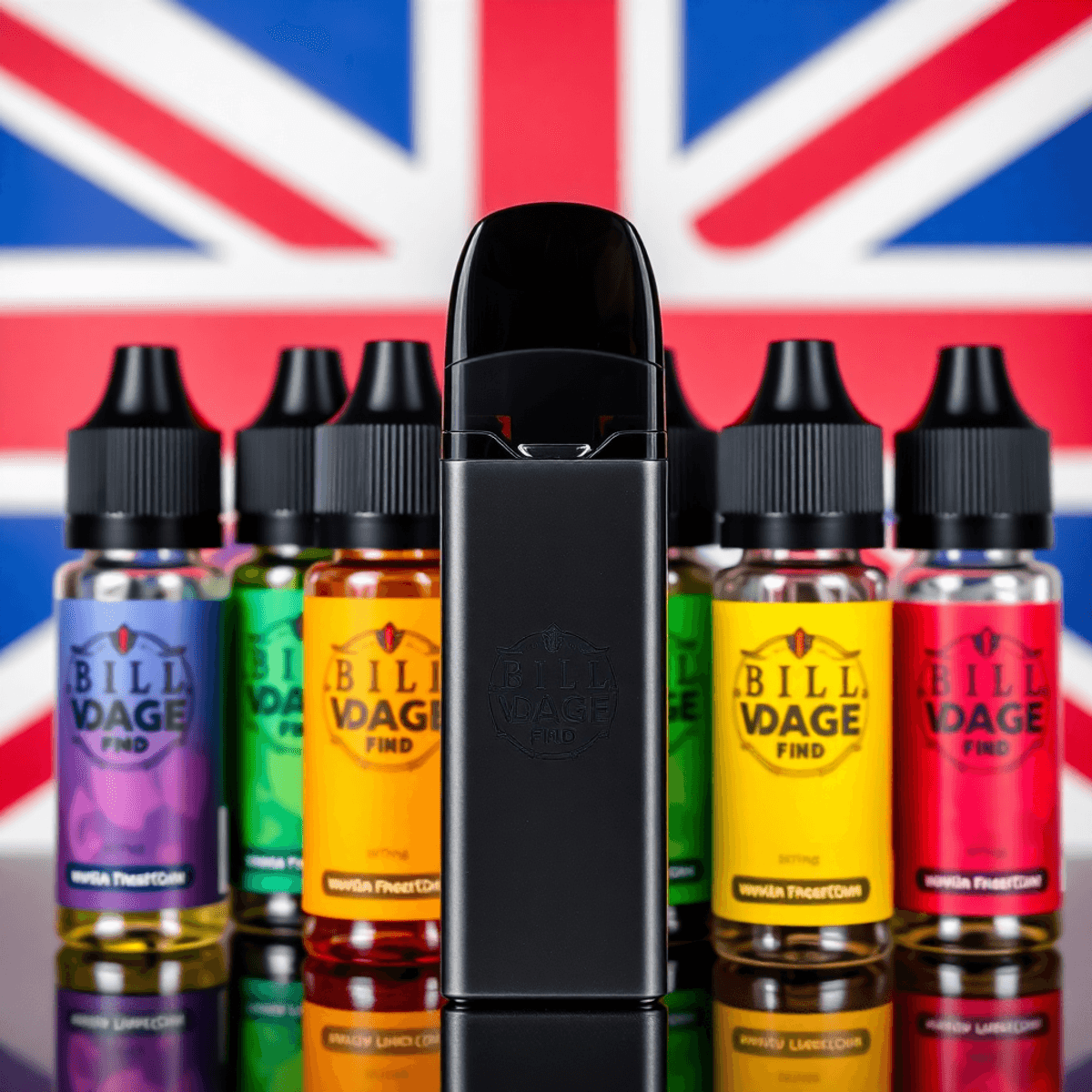Vaping has become a popular alternative to traditional smoking, with millions of people now using electronic cigarettes and similar devices. These battery-powered devices heat liquid solutions containing nicotine, flavourings and other chemicals to create an inhalable aerosol. This surge in vaping’s popularity raises pressing questions about its effects on lung health. Research shows that inhaling vape aerosols can irritate the delicate tissues of the respiratory system, potentially leading to inflammation, breathing difficulties and other health complications.
Many vapers wonder about their lungs’ ability to recover after they quit. This question becomes particularly relevant as awareness grows about vaping-related lung injuries and respiratory conditions. Whether you’re considering quitting or have already stopped vaping, understanding the healing potential of your lungs is crucial.
This article explores the relationship between vaping and lung health, examining scientific evidence about lung recovery after cessation. We’ll investigate healing timeframes, recovery signs and steps to support lung health during the healing process.
If you are contemplating quitting vaping but still enjoy the experience it provides, consider transitioning to a product with lower nicotine levels or different vaping styles. For instance, AirsPops Bottle by AIRSCREAM Replacement Coils offer two types of resistance (0.6Ω & 1.0Ω) to match your preferred vaping style (DTL or MTL).
Moreover, products like the Smok TFV16 Mesh Coils can enhance your vaping experience while you gradually reduce your nicotine intake. Remember, it’s never too late for your lungs to start healing.
Understanding Vaping and Its Impact on the Lungs
Vaping involves inhaling an aerosol created by heating a liquid solution containing nicotine, flavourings and other chemicals. This process transforms these substances into tiny particles that enter deep into the respiratory system.
The Harmful Chemicals in Vape Smoke
The chemical composition of vape smoke includes several harmful substances:
- Diacetyl: A flavouring compound linked to serious respiratory conditions
- Formaldehyde: A known carcinogen produced when e-liquid is heated
- Acrolein: An irritant that causes damage to the lungs’ protective lining
- Vitamin E acetate: An additive associated with severe lung injuries
How These Chemicals Affect the Lungs
These chemicals interact with lung tissue in various harmful ways:
- Direct Cell Damage: Toxic substances attack the cells lining the airways
- Inflammation: Chemical exposure triggers persistent inflammatory responses
- Mucus Production: Increased secretion leads to airway obstruction
- Tissue Scarring: Long-term exposure results in permanent structural changes
The Respiratory Conditions Linked to Vaping
The accumulation of these effects contributes to several serious respiratory conditions:
- Popcorn Lung: Bronchiolitis obliterans, causing irreversible lung damage
- COPD: Progressive lung disease affecting breathing capacity
- Chronic Bronchitis: Persistent inflammation of the bronchial tubes
- EVALI: E-cigarette or vaping product use-associated lung injury
Research Findings on Vaping and Lung Damage
Research indicates these substances can cause both immediate and long-term damage to lung tissue. The concentration of harmful chemicals varies depending on factors such as device temperature, e-liquid composition and usage patterns.
The Extent of Lung Damage Caused by Vaping
Vaping-related lung injuries can occur in both sudden (acute) and long-lasting (chronic) forms, with varying degrees of severity.
Acute Condition: EVALI
The most severe acute condition is known as EVALI (e-cigarette or vaping product use-associated lung injury), which can cause rapid deterioration of lung function. Symptoms include:
- Severe breathing difficulties
- Sharp chest pain
- Rapid heart rate
- Extreme fatigue
- Fever and chills
EVALI cases have resulted in hospitalisations and, in severe instances, required intensive care treatment with ventilator support. The condition can cause permanent scarring of lung tissue, affecting long-term respiratory function.
Chronic Conditions from Long-Term Vaping
Long-term vaping leads to chronic conditions that develop gradually:
- Chronic Obstructive Pulmonary Disease (COPD): Causes narrowing of airways and destruction of lung tissue
- Emphysema: Results in permanent enlargement of air spaces and breakdown of lung tissue
- Chronic Bronchitis: Creates persistent inflammation and excessive mucus production
How Vaping Causes Lung Damage Differently Than Smoking
The damage mechanisms from vaping differ from traditional smoking. While cigarette smoke causes immediate irritation and visible damage, vaping-related injuries often develop silently.
Deeper Penetration of Vape Particles
The ultra-fine particles in vape aerosols penetrate deeper into lung tissue, potentially causing damage at cellular levels before symptoms become apparent.
Unique Inflammatory Responses Triggered by Vaping
Research indicates that vaping can trigger unique inflammatory responses in the lungs. These responses include:
- Lipoid pneumonia from oil-based substances
- Chemical pneumonitis from irritant compounds
- Cellular damage from free radicals
- Disruption of protective lung barriers
Can Your Lungs Heal After Quitting Vaping?
The human body has remarkable healing capabilities and the lungs demonstrate significant potential for recovery after quitting vaping. Research indicates that positive changes begin within the first few weeks of cessation.
However, the journey to recovery can be complicated by the type of vaping products used. For instance, high nicotine e-liquids like the 20mg Ohm Brew Bar Series Double Brew Nic Salts can lead to more severe damage, making recovery longer and more challenging.
Initial Recovery Signs (2-3 Weeks)
- Reduced inflammation in airways
- Improved blood oxygen levels
- Decreased coughing episodes
- Better breathing capacity during physical activities
The speed and extent of lung healing depends on several key factors:
- Duration of vaping habit: Shorter periods of use typically allow for quicker recovery
- Frequency of use: Heavy users may require longer healing periods
- Type of vaping products used: Certain chemicals cause more severe damage
- Individual health factors: Age, general health status, genetic predisposition
Tissue Regeneration Potential
Lung tissue shows varying degrees of regenerative capacity. Mild damage from short-term vaping often resolves completely. The lungs can repair:
- Surface-level irritation
- Minor inflammation
- Mucus build-up
- Small areas of tissue damage
Some changes might be permanent in cases of chronic use:
- Scarred lung tissue
- Damaged air sacs
- Altered lung structure
- Compromised breathing capacity
Research suggests that stopping vaping allows the lungs to begin their natural healing process. The body activates specialised cells to repair damaged areas and restore normal function. This process continues progressively as long as exposure to harmful substances remains eliminated.
The healing journey varies significantly between individuals. Young adults typically show faster recovery rates compared to older individuals. People with pre-existing health conditions might experience slower healing progression.
It’s important to note that while some damage may be irreversible, substantial improvements are still possible after quitting vaping. In fact, studies have shown that the lungs can recover significantly over time once they are no longer exposed to harmful substances found in vaping products.
Signs That Indicate Lung Healing Post-Vaping
Physical signs of recovery become noticeable within weeks of stopping vaping. A significant reduction in coughing marks one of the earliest positive changes. The body’s natural cleaning mechanism, known as the mucociliary escalator, begins functioning properly again, leading to decreased mucus production and less frequent need to clear the throat.
Many former vapers report these improvements in their respiratory health:
- Reduced frequency and intensity of coughing fits
- Clearer throat with less irritation
- Decreased mucus production and congestion
- Better breathing during physical activities
- Reduced wheezing and chest tightness
- Improved sense of taste and smell
The restoration of normal breathing patterns often becomes apparent during daily activities. Tasks that once caused breathlessness, such as climbing stairs or light exercise, become easier to manage. The lungs’ capacity to take in oxygen improves as inflammation decreases and airways begin to heal.
Sleep quality tends to improve as breathing becomes less laboured at night. Many people notice they wake up feeling more refreshed, without the morning congestion that often accompanies regular vaping.
These positive changes signal the body’s natural healing processes at work. The rate and extent of improvement vary among individuals, influenced by factors such as previous vaping habits and general health status.
Supporting Lung Detoxification and Recovery After Quitting Vaping
Creating an optimal environment for lung healing involves specific lifestyle adjustments that support natural detoxification processes. Clean indoor air quality plays a vital role in lung recovery – using air purifiers with HEPA filters helps remove airborne particles and creates a healthier breathing space. Opening windows regularly for ventilation and keeping indoor spaces free from dust, mould and other respiratory irritants allows healing lung tissue to repair without additional stress.
Exercise for Lung Recovery
Regular exercise strengthens respiratory muscles and improves lung capacity. Activities like:
- Brisk walking
- Swimming
- Cycling
- Deep breathing exercises
- Yoga
These activities help clear airways and boost oxygen circulation throughout the body. Starting with gentle exercise and gradually increasing intensity allows recovering lungs to adapt safely.
Nutrition for Lung Health
A nutrient-rich diet supports tissue repair and lung health restoration. Foods high in antioxidants protect against oxidative stress and inflammation:
- Berries
- Dark leafy greens
- Citrus fruits
- Nuts and seeds
- Green tea
Essential nutrients for lung recovery:
- Vitamin C – supports collagen production
- Vitamin E – protects cell membranes
- Beta carotene – aids tissue repair
- Omega-3 fatty acids – reduce inflammation
Staying well-hydrated helps thin mucus secretions and supports the body’s natural cleansing mechanisms. Drinking plenty of water throughout the day aids the removal of toxins and promotes healing.
Avoiding Hindrances to Recovery
For those who have recently quit vaping, it’s crucial to avoid products that could hinder recovery. However, if you’re looking for 0mg options or nicotine salt alternatives, there are several products available that can provide a smoother transition. Products like the Ohm Brew Bar Series Double Brew 100ml Shortfill can offer a balanced vaping experience while you adjust to life without traditional vaping. If you’re considering a gradual reduction in nicotine, products like the 14mg Ohm Boy Longfill Booster Kit may be beneficial.
Managing Persistent or Chronic Symptoms After Quitting Vaping
Some individuals experience lasting respiratory symptoms even after stopping vaping. These persistent issues require proper medical attention and structured treatment approaches.
Signs to seek medical help:
- Continuous shortness of breath
- Persistent chest pain or tightness
- Ongoing coughing fits
- Unexplained fatigue
- Difficulty performing daily activities
Pulmonary rehabilitation programmes offer comprehensive support for those with chronic vaping-related conditions. These specialised programmes typically include:
- Breathing exercises and techniques
- Physical conditioning
- Educational sessions about lung health
- Psychological support
- Group therapy sessions
Medical professionals might prescribe various treatments depending on specific symptoms:
- Bronchodilators to open airways
- Anti-inflammatory medications
- Supplemental oxygen therapy
- Antibiotics for recurring infections
Regular medical check-ups play a vital role in recovery monitoring. Your healthcare provider will:
- Track lung function improvements
- Adjust medications as needed
- Screen for potential complications
- Assess overall recovery progress
Specialised clinics now offer targeted treatment plans for former vapers, combining traditional respiratory care with newer therapeutic approaches designed specifically for vaping-related lung conditions.
Long-Term Health Outlook After Quitting Vaping
Research into the long-term effects of vaping is still in its early stages, but studies suggest that there are promising health improvements after quitting. The body has an incredible ability to bounce back and we can see reductions in risk across several health markers:
- Cancer Risk: Studies suggest a gradual decrease in cancer-causing compounds within the body after stopping vaping
- Cardiovascular Health: Blood pressure and heart rate typically stabilise within weeks of quitting
- Respiratory Function: Lung capacity shows measurable improvements within 3-9 months
Scientists are still keeping an eye on former vapers to get a better understanding of the complete recovery process. Right now, the data shows that there are significant health benefits, but some changes might be permanent depending on:
- Duration of vaping habit
- Types of e-liquids used
- Pre-existing health conditions
- Age when vaping started
The medical community firmly believes that quitting vaping at any point brings substantial health advantages. Each month that goes by without vaping allows the body to heal and lower the risks of diseases. Research is ongoing to discover more about how the body recovers after vaping.
Expert Guidance and Reliable Information Sources on Quitting Vaping
Quitting vaping requires a structured approach backed by professional support and reliable information. Healthcare professionals, including GPs and smoking cessation specialists, can create personalised plans to manage withdrawal symptoms and prevent relapse. These experts often recommend:
- Nicotine replacement therapy options such as 18mg One E-Liquids Cool Nic Shot or 20mg Nic Salt for quicker absorption
- Behavioural support strategies
- Regular check-ins to monitor progress
- Mental health support when needed
Finding trustworthy information about vaping products and safety is crucial. Top Vapes offers comprehensive resources, including:
- Independent product testing results
- Safety guidelines and best practices
- Expert reviews of vaping devices like the Vaporesso XROS 3 Mini Pod Kit
- Current research and industry updates
The NHS Stop Smoking Services provide free support across the UK, with trained advisers offering:
- One-to-one counselling sessions
- Group support meetings
- Access to prescription medications
- Progress tracking tools
Professional guidance combined with accurate product information creates a solid foundation for successful cessation. Local support groups and online communities can supplement professional help by sharing practical tips and experiences. Medical professionals recommend documenting your quitting journey and maintaining regular contact with healthcare providers to address any concerns promptly.
For those who still find it hard to quit, exploring options like 0mg Ohm Boy 60ml Longfills might provide a transitional phase towards cessation by offering a pure and flavourful vaping experience without the nicotine.
Conclusion
The path to lung healing after vaping requires dedication and proper support. Research shows that lungs can heal significantly after quitting vaping, with noticeable improvements starting within weeks. The key lies in taking decisive action:
- Make a firm commitment to quit vaping completely
- Adopt healthy lifestyle changes that support lung recovery
- Stay physically active with regular exercise
- Maintain a nutrient-rich diet
- Keep indoor air clean and fresh
Professional guidance plays a vital role in successful recovery. Your healthcare provider can create a personalised plan whilst monitoring your progress. Remember that each person’s healing journey is unique – some may experience rapid improvements whilst others need more time.
The question “can your lungs heal from vaping?” has a hopeful answer. With proper support, determination and healthy choices, your lungs have a remarkable capacity to repair and regenerate. Take the first step today – your future self will thank you for it.
FAQs
Can your lungs heal after quitting vaping?
Yes, lungs can begin to heal after quitting vaping, with early signs of recovery appearing 2 to 3 weeks post-cessation. The extent of lung healing depends on factors like the duration and intensity of vaping, with potential for partial or substantial tissue regeneration in many cases.
What toxic chemicals in vaping harm lung health?
Vape smoke contains harmful substances such as diacetyl, formaldehyde, acrolein and vitamin E acetate. These chemicals cause lung damage by irritating and inflaming lung tissues, increasing the risk of diseases like COPD, popcorn lung, chronic bronchitis and EVALI.
What are common signs that indicate lung healing after quitting vaping?
Positive indicators of lung healing include a reduction in coughing and mucus production, improved breathing capacity and less chest tightness over time. These symptoms suggest the lungs are recovering from the effects of vaping.
How can I support my lungs’ detoxification and recovery after quitting vaping?
Supporting lung recovery involves maintaining clean indoor air quality, engaging in regular exercise to enhance lung function and consuming a balanced diet rich in antioxidants to aid tissue repair and overall lung health.
What should I do if I experience persistent respiratory symptoms after quitting vaping?
If symptoms persist long-term, it’s important to seek medical attention. Pulmonary rehabilitation programs and medications may be necessary to manage chronic conditions caused by vaping. Regular medical checkups are crucial during recovery.
Does quitting vaping reduce long-term health risks?
Quitting vaping reduces the risk of cancer and other serious diseases over time. While some long-term effects are still under study, cessation is currently understood to improve overall health outcomes related to lung function and disease risk.




